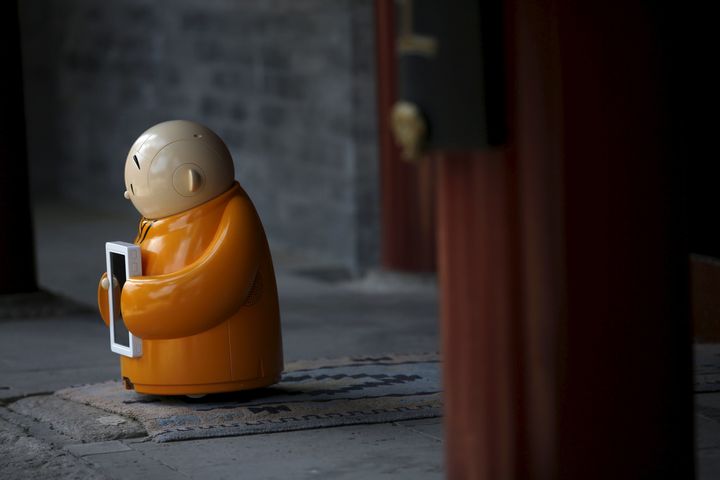
People respond to daily disturbances according to the subjective significance of these changes. The difference between machines and individuals is the range of creative possibilities, generating a much wider range of responses with different signs and diversity of consequences. Machines do not get sick because they are not creative enough to develop alternative forms of adaptation (beyond its design) to meet new situations. Just stop working.
In human systems (from individuals, families, groups and communities), the changes in their living conditions generate the need for readjustment in its structure (physical, cognitive, relational) to test new forms of adaptation. These internal redefinitions cause life cycles that make changes in their living conditions. People will always need to adapt to the conditions of their environment, the quality of these forms of adaptation defines their quality of life. The disease arises from the ways of adaptation.
Machines do not get sick because machines do not adapt, just follow a set of instructions. People have the ability to creatively adapt to new living conditions. But the creative is not synonymous with healthy. People get sick when they meet and transform their creativity into a symptomatic adaptation.
The Symptoms of Chimneys
The social symptoms or illnesses that characterize a historical period depend on the conditions of life in this society. Since the beginning of last century with the development of the Industrial Revolution, the characteristics of life in modern societies arise from the relationship between the social conditions of production and personal conditions of well-being. Production conditions influence in welfare and the transformation in this conditions affects the well-being.
When the chimneys of the early nineteenth century began to expand, and industrial growth shook the Victorian monotony, Freud opened the doors of the unconscious. The world discovered new explanations about the causes of many symptoms. According to Freud, when people “repress” unresolved traumatic events of their lives these episodes are hidden in the depths of the unconscious. Some messy fragments return to consciousness generating a series of facts: from naughty verbal structures, disturbing images in dreams, to severe symptoms. The interesting novelty of Freud’s ideas is that these traumatic events were related to sexual repression. Traumatic sexuality as an explanation of many symptoms grew as much as chimneys. In a world of economic transformation, repressed sexuality was associated with the consequences of repressive Victorian morality.
The past century began with the idea that society symptoms were related to the disturbing implications of a rigid morality. But, in fact, at the beginning of last century, sexuality was unproductive for a workplace within which 90% of the work based on physical effort. In the world that was changing their production conditions; Victorian morality was a functional excuse for the expansion of an industrial model that needed energy from both the minerals and the workers.
Today, the “repressed sexuality” is far from a pattern of social symptoms. The diversification of job roles has expanded the diversity of dysfunctions. The physical work has been reduced to less than a third respect the Victorian Era. The current range of symptoms includes from classical diseases (depression, heart disease, stress, physical trauma), to the most modern, which in the last years have grown exponentially (panic disorder, burnout, addictions, bullying, addictions).
The Inside Enemy
In the classical concept of disease, symptoms appear due to external attack or internal trauma. Under this perspective, the causes of symptoms are in the past. The assumption is: if you eliminate the causes, symptoms disappears. But, symptoms reflect the paradox of internal conditions of the system facing changes.
Dysfunctions arise from a complex structure. Therefore, addressing an isolated symptom, to reduce or remove the effects, does not guarantee the transformation of the dysfunctional structure. Change the status of symptoms without addressing dysfunctional patterns that sustain them, only generates a renewal of problems. In this sense, the concept of “a disturbing factor in the past” is reversed. The “enemy” is not outside in the past; it is inside the system in the present. The symptom is an ally of the human system. Why a human system sustains its permanence at the cost of symptoms or dysfunctions? In general, the cost of the symptoms is less disturbing than the process of transformation.
The symptom is a temporary manifestation that shows the structural vulnerability of the system to deal with new conditions of life. When does a circumstantial symptom become a dysfunctional condition of structure? When people have a dependency on the dysfunctions to maintain their adaptation to the changes. Therefore, are differences between circumstantial symptoms (a transient response), and the consolidation of symptomatic conditions or dysfunctional structures for the system.
The inability of the system to transform itself generates dysfunctional structures that support (as prosthesis) a fragile dynamic of the interaction. Under these conditions, the adaptive capacity depends on the resistance of prosthesis. The magnitude of the dysfunction depends on their function. That is, the strength of symptoms depends on its importance as a structural support. The risk of dysfunctional conditions is: if there is no transformation, the symptom engulfs the entire structure.
The function of symptoms is to maintain the permanence of the system without structural modifications. This situation represents the paradox of the symptom: on the one hand, it makes life more painful (dysfunction), but it also allows the benefit of inertia (function). This postulate is a core point in addressing dysfunctions because attacking the symptom presses on the system’s vulnerability. Attacking the symptom reinforces its dysfunction and increases the level of vulnerability. Therefore, the system closes to the possibilities of transformation.
